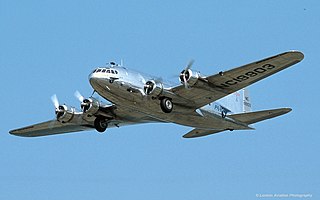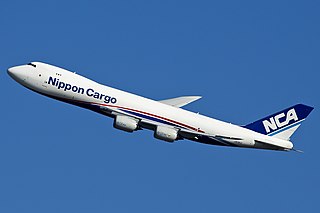
Trans World Airlines Flight 800 was a Boeing 747-100 that exploded and crashed into the Atlantic Ocean near East Moriches, New York, on July 17, 1996, at about 8:31 p.m. EDT, 12 minutes after takeoff from John F. Kennedy International Airport on a scheduled international passenger flight to Rome, with a stopover in Paris. All 230 people on board died in the crash; it is the third-deadliest aviation accident in U.S. history. Accident investigators from the National Transportation Safety Board (NTSB) traveled to the scene, arriving the following morning amid speculation that a terrorist attack was the cause of the crash. Consequently, the Federal Bureau of Investigation (FBI) and New York Police Department Joint Terrorism Task Force (JTTF) initiated a parallel criminal investigation. Sixteen months later, the JTTF announced that no evidence of a criminal act had been found and closed its active investigation.

On March 27, 1977, two Boeing 747 passenger jets, operating KLM Flight 4805 and Pan Am Flight 1736, collided on the runway at Los Rodeos Airport on the Spanish island of Tenerife. Resulting in 583 fatalities, this accident is the deadliest in aviation history.

An aviation accident is defined by the Convention on International Civil Aviation Annex 13 as an occurrence associated with the operation of an aircraft, which takes place from the time any person boards the aircraft with the intention of flight until all such persons have disembarked, and in which a) a person is fatally or seriously injured, b) the aircraft sustains significant damage or structural failure, or c) the aircraft goes missing or becomes completely inaccessible. Annex 13 defines an aviation incident as an occurrence, other than an accident, associated with the operation of an aircraft that affects or could affect the safety of operation.
This is a list of aviation-related events from 1983:

Delta Air Lines Flight 191 was a regularly scheduled Delta Air Lines domestic service from Fort Lauderdale, Florida to Los Angeles with an intermediate stop at Dallas/Fort Worth International Airport (DFW). On August 2, 1985, the Lockheed L-1011 TriStar operating Flight 191 encountered a microburst while on approach to land at DFW. The aircraft impacted ground over one mile (1.6 km) short of the runway, struck a car near the airport, collided with two water tanks and disintegrated. The crash killed 137 people and injured 26 others. The National Transportation Safety Board (NTSB) determined that the crash resulted from the flight crew's decision to fly through a thunderstorm, the lack of procedures or training to avoid or escape microbursts, and the lack of hazard information on wind shear.

The Boeing E-4 Advanced Airborne Command Post (AACP), the current "Nightwatch" aircraft, is a strategic command and control military aircraft operated by the United States Air Force (USAF). The E-4 series are specially modified from the Boeing 747-200B for the National Emergency Airborne Command Post (NEACP) program. The E-4 serves as a survivable mobile command post for the National Command Authority, namely the President of the United States, the Secretary of Defense, and successors. The four E-4Bs are operated by the 1st Airborne Command and Control Squadron of the 595th Command and Control Group located at Offutt Air Force Base, near Omaha, Nebraska. An E-4B when in action is denoted a "National Airborne Operations Center".
An inerting system decreases the probability of combustion of flammable materials stored in a confined space, especially a fuel tank, by maintaining a chemically non-reactive or "inert" gas, such as nitrogen, in such a space. "Inerted" fuel tanks may be used on land, or aboard ships or aircraft.
1996 was the bloodiest year for commercial aviation since 1985: 1,845 people were killed in aviation accidents. This is a list of aviation-related events from 1996:

Pan Am Flight 214 was a scheduled flight of Pan American World Airways from San Juan, Puerto Rico, to Baltimore, Maryland, and Philadelphia, Pennsylvania. On December 8, 1963, the Boeing 707 serving the flight crashed near Elkton, Maryland, while flying from Baltimore to Philadelphia, after being hit by lightning. All 81 occupants of the plane were killed. The crash was Pan Am's first fatal accident with the 707, which it had introduced to its fleet five years earlier.

The Boeing Model 307 Stratoliner was an American commercial transport aircraft that entered commercial service in July 1940. It was the first to offer a pressurized cabin, allowing it to cruise at an altitude of 20,000 ft (6,000 m), well above many weather disturbances. The pressure differential was 2.5 psi (17 kPa), so at 14,700 ft (4,480 m) the cabin air pressure was equivalent to an altitude of 8,000 ft (2,440 m). The Model 307 had capacity for a crew of six and 33 passengers. The cabin was nearly 12 ft (3.6 m) across. It was the first land-based aircraft to include a flight engineer as a crew member. In addition to its civilian service it was also flown as the Boeing C-75 Stratoliner by the United States Army Air Forces, who used it as a long-range cargolift aircraft.

The Boeing 747-8 is a wide-body airliner developed by Boeing Commercial Airplanes, the latest and largest variant of the 747. After introducing the 747-400, Boeing considered larger 747 versions as alternatives to Airbus A3XX. The stretched 747 Advanced was launched as the 747-8 on November 14, 2005, for a market forecast of 300 aircraft. The first 747-8F Freighter performed its maiden flight on February 8, 2010, and the passenger 747-8I Intercontinental followed suit on March 20, 2011. The cargo version was first delivered in October 2011 and the airliner began commercial service in June 2012.
TWA Flight 800 conspiracy theories are discredited alternative explanations of the cause of the crash Trans World Airlines Flight 800 in 1996. The NTSB found that the probable cause of the crash of TWA Flight 800 was an explosion of flammable fuel/air vapors in a fuel tank, most likely from a short circuit. Conspiracy theories claim that the crash was due to a U.S. Navy missile test gone awry, a terrorist missile strike, or an on-board bomb. In 2013, a documentary alleging that the investigation into the crash was a cover-up made news headlines with statements from six members of the original investigation team, now retired, who also filed a petition to reopen the probe.

As of July 2020, a total of 61 Boeing 747 aircraft, or just under 4% of the total number of 747s built, first flown commercially in 1970, have been involved in accidents and incidents resulting in a hull loss, meaning that the aircraft has either been destroyed or has been damaged beyond economical repair. Of the 61 Boeing 747 aircraft losses, 32 resulted in no loss of life; in one, a hostage was murdered; and in one, a terrorist died. Some of the aircraft that were declared damaged beyond economical repair were older 747s that sustained relatively minor damage. Had these planes been newer it might have been economically viable to repair them, although with the 747's increasing obsolescence this is becoming less common. 747s have been involved in accidents resulting in the highest death toll of any aviation accident, the highest death toll of any single airplane accident and the highest death toll of a mid-air collision, although, as with most airliner accidents, the roots of causation in these incidents involved a confluence of multiple factors which rarely could be ascribed to flaws with the 747's design or its flying characteristics.

Thai Airways International Flight 114, a Thai Airways International Boeing 737-400 bound for Chiang Mai from Don Mueang Airport in Bangkok, was destroyed by an explosion of the center wing tank resulting from ignition of the flammable fuel/air mixture in the tank while the aircraft was parked prior to boarding on the ground on 3 March 2001. The source of the ignition energy for the explosion could not be determined with certainty, but the most likely source was an explosion originating at the center wing tank pump as a result of running the pump in the presence of metal shavings and a fuel/air mixture. One flight attendant died.

On 4 October 1992, El Al Flight 1862, a Boeing 747 cargo aircraft of the then state-owned Israeli airline El Al, crashed into the Groeneveen and Klein-Kruitberg flats in the Bijlmermeer neighbourhood of Amsterdam, the Netherlands. From the location in the Bijlmermeer, the crash is known in Dutch as the Bijlmerramp.

TWA Flight 891 was a Lockheed L-1649A Starliner that crashed not long after taking off from Milan Malpensa Airport on 26 June 1959. All 68 passengers and crew on board were killed.

Aircraft fuel tanks are a major component of aircraft fuel systems. They can be classified into internal or external fuel tanks and can be further classified by method of construction or intended use. Safety aspects of aircraft fuel tanks were examined during the investigation of the 1996 TWA Flight 800 in-flight explosion accident.

American Airlines Flight 383 was a regularly scheduled passenger flight operating from Chicago O'Hare International Airport to Miami International Airport. On October 28, 2016, the Boeing 767-300ER operating the flight was accelerating for takeoff down Chicago O'Hare's runway 28R when the aircraft's right engine suffered an uncontained failure that led to a severe fire. The crew managed to abort the takeoff and evacuate everyone on board, while responding emergency services extinguished the fire. Twenty-one people were injured, and the aircraft was substantially damaged and written off.















